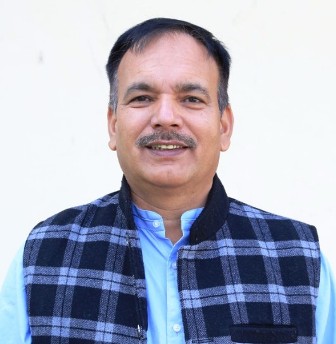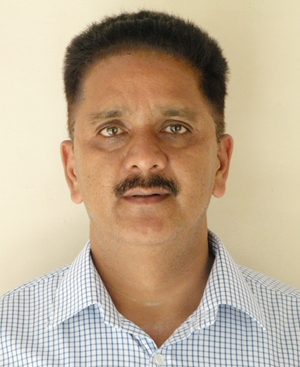Promoting Conservation of threatened plant species in the west Himalayan Region - A participatory approach
The conservation of medicinal plants is receiving attention all across the globe keeping in view the resurgence of interest in herbal medicines. With the increasing demands, medicinal plants are being explored from their natural source, which is affecting their availability in nature. This has promoted the conservation of such species through in-situ and ex-situ methods to improve their availability for end users and release the pressure of exploitation from their natural habitats. In addition, it is pertinent to establish germplasm repositories to fulfill the need for planting material for the cultivation process in farmer's fields and establishment of market strategies for uplifting the economic condition of local inhabitants. The major aim is to promote the cultivation of threatened medicinal plants at farmer's fields; to develop market linkages for selling of cultivated produce and sensitize diverse stakeholders group towards promoting conservation of threatened medicinal plants.
• A need base assessment survey was conducted in the fourteen different villages of Chaudas area, Pithoragarh district (29°59'22'' N; 80°39'31'' E), and documented the requirements of villagers. As a result, seven potentially medicinal plant species namely Allium stracheyi, Angelica glauca, Cinnamomum tamala, Hedychium spicatum, Picrorrhiza kurrooa, Saussurea costus and Valeriana jatamansi were selected and identified for cultivation at farmer's fields (900-2750 m asl).
• A total of 21 awareness programme, field orientation workshops, and agro-techniques-based hands-on training on medicinal plant cultivation were conducted in the region, and a total of 1579 stakeholders (male 1111; female 468) were sensitized towards promoting the conservation of threatened medicinal plants.
• A total of 172 farmers from 11 villages have initiated cultivation of selected seven plant species in 125 nali (2.5 ha) land after the intervention of the project.
• Similarly, species specific protocols of 7 species using different propagation methods were developed (i.e. seed germination for Angelica glauca, Cinnamomum tamala, Saussurea costus; vegetative propagation for Allium stracheyi, Picrorrhiza kurrooa, and in-vitro propagation technique for Valeriana jatamansi). Over 46 lakh plants of selected species were produced.
• Simultaneously, 14 demonstration sites (11 villages, 1 Sri Narayan Ashram, 2 school conservation models) were established along the elevation gradient (900-2750m) in the region. These sites have functioned as sites/mother nurseries. The nursery developed at Sri Narayan Ashram is being maintained for the conservation and production of threatened medicinal plants. Germplasm of 15 high-value threatened Himalayan species are maintained in the Sri Narayan Ashram, and function as a demonstration site and capacity building center.
• In addition, progressive farmers were registered at the Herbal Research and Development Institute (HRDI) Gopeshwar, and certification of cultivated produce was done with the Quality Council of India (QCI) New Delhi under the certification scheme for medicinal plant produce (VCSMPP). For the development of market linkages for selling cultivated produce and providing direct benefit to farmers, a buy-back arrangement were facilitated, and a Memorandum of Understanding (MoU) was signed between traders and farmers. Synergy was established between farmers and ongoing schemes of line agencies like MNERGA, Bhesaj Sangh, etc. These efforts provided opportunities for the farmers to develop their skills and knowledge's for the cultivation and conservation of threatened medicinal plants.
• All these efforts help to promote a cluster-based approach to promoting medicinal plant cultivation in the Chaudas area. This is the first of its kind intervention where cultivated produce was directly sold to end users and all the steps from the sensitization to capacity building/skill development, collection of propagules to certification, registration to buyback arrangements were facilitated. Based on the intervention program, 40 farmers of Chaudas area earned more than Rs. 10 lakh through selling of cultivated produce (Hedychium spicatum), and other crops are ready for sell-out.

Figure 1: Sensitization and awareness campaign at Sosa village, Pithoragarh

Figure 2: Cultivation of Hedychium spicatum at farmers land Chaudas area, Pithoragarh






